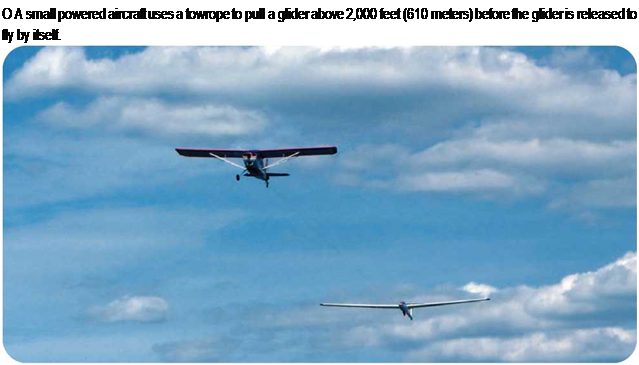How a Glider Flies
Like all airplanes, a glider must maintain a flow of air over its wings to sustain lift. Lacking a motor, a glider cannot fly level for long and still maintain that airflow. In calm air, the pilot must keep the nose of the aircraft angled slightly toward the ground-as the glider flies in a gentle dive, gaining speed, the airflow around the wings provides lift. Having built up speed, it can rise up before descending again. A glider can soar to great heights if the pilot can locate rising air currents, known as thermals or updrafts. Carried up by such currents, the plane spirals upward, just as a vulture or buzzard soars on widespread wings and can fly for many hours in this way.
A glider has a high glide ratio, which determines the distance it can travel forward compared to its height loss. If a particular aircraft has a glide ratio of 40:1, it can glide 40 miles (64 kilometers) forward for every mile of altitude it loses. Once this glider has reached an altitude of around 3,000 feet (915 meters), the pilot has a good chance of flying around 120,000 feet (36,600 meters) in distance. If the pilot can gain greater height by soaring in a rising air current, the length of the flight will be
 |
much longer. Some gliders have a glide ratio of 70:1. The Space Shuttle, by contrast, has a glide ratio of only 4:1.










